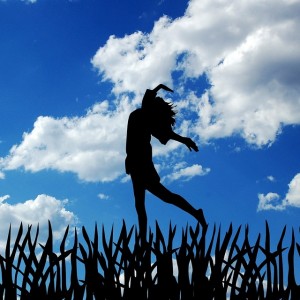By Rowena Kong
Research has mostly focused on how various socioeconomic problems and health challenges can limit disadvantaged children’s creativity and success. For instance, the effect of socioeconomic status on academic achievement has been extensively examined. However, it seems that most geniuses of the century – Einstein, Newton and Beethoven, to name a few – did not really get to enjoy a remarkably normal childhood or adult life, and yet they made unprecedented scientific and artistic contributions to the world at large. Even their children and direct descendants paled in comparison to their astounding achievements. Past assumptions that intelligence is solely inherited have been debated on grounds that it can be nurtured and created by schools, which provide stimulating discussion-based learning in the classroom (Resnick, & Schantz, 2015). As for physical barriers posed by debilitating health conditions, we can treat ourselves to the admirable story of surviving genius Stephen Hawking, who, despite having been diagnosed with amyotrophic lateral sclerosis at the young age of 21, has lived past 50 and remained strong in the field of academics as a renowned theoretical physicist. I would say that this is nothing short of God’s miracle and a reminder to us of man’s undefeatable potential.
Can stressful and harsh conditions be unusually beneficial and serve as a strong drive for the person with above-average willpower and determination to succeed? In short, how do stressful situations filter out the best from the average? A study which looked into aspects of personality that differentiated senior executives who did not fall ill after exposure to high-degree stressful life events over a period of time from those who did reported that more hardiness, such as having an attitude of vigorousness toward the environment, a sense of meaningfulness and an internal locus of control, contributed to the more favourable health response of those who remained well after being stressed (Kobasa, 1979).
Personality-environment interaction aside, it might be worth taking a look at certain neural processes that occur when a person faces stress. The neurotransmitter dopamine plays a significant role in reward anticipation and learning, and research has investigated the link between its release in the mesocorticolimbic structures in the brain and an individual’s stressful state. A positron emission tomography (PET) study by Pruessner, Champagne, Meaney and Dagher (2004) reported significant release of dopamine in the ventral striatum when subjects who experienced low early parental care were exposed to a psychosocial stressor. What is also worth noting is that the salivary cortisol level of these subjects was positively correlated with dopamine release levels. Such an increase of this neurotransmitter may be presumed to be localized in the region. However, in an early animal microdialysis study which assessed the difference in extracellular dopamine levels between rats’ states of rest and exposure to tail-shock stress, there were increases in the nucleus accumbens and medial frontal cortical regions as well (Abercrombie, Keefe, DiFrischia, & Zigmond, 1989). Cabib and Puglisi-Allegra (2012) proposed that stress-induced mesoaccumbens dopamine increase serves as a promoter of active coping strategies and that this initiative to action is coordinated by the event appraising function of the medial prefrontal cortex.
On one hand, in addition to sharpening one’s skills at coping and problem-solving, there is also the role that dopamine plays in creativity, as evidenced in studies of Parkinson’s disease. Lhommée et al. (2014) reported that the creativity of patients of the disease, who were given higher dosages of a dopamine agonist, decreased after they underwent a surgery to improve their motor symptoms. We also know that it takes unique creativity to be a genius problem-solver.
Perhaps, we are still scratching the surface in terms of piecing together the puzzle of the relationship between dopamine and stress, and the ways in which both factors couple to lead a person boldly along the road to success. I think future directions of research should consider the potential therapeutic effect of multi-functional (and still mysterious) dopamine under stressful conditions, while keeping in mind at the same time the anticipatory influence it has on us emotionally and cognitively.
References
Abercrombie, E. D., Keefe, K. A., DiFrischia, D. S., & Zigmond, M. J. (1989). Differential effect of stress on in vivo dopamine release in striatum, nucleus accumbens, and medial frontal cortex. Journal of Neurochemistry, 52(5), 1655-1658. doi:10.1111/j.1471-4159.1989.tb09224.x
Cabib, S., & Puglisi-Allegra, S. (2012). The mesoaccumbens dopamine in coping with stress. Neuroscience & Biobehavioral Reviews, 36(1), 79-89. doi:10.1016/j.neubiorev.2011.04.012
Kobasa, S. C. (1979). Stressful life events, personality, and health: An inquiry into hardiness. Journal of Personality and Social Psychology, 37(1), 1-11. doi:10.1037/0022-3514.37.1.1
Lhommée, E., Batir, A., Quesada, J., Ardouin, C., Fraix, V., Seigneuret, E.,…Krack, P. (2014). Dopamine and the biology of creativity: Lessons from Parkinson’s disease. Frontiers in Neurology, 5, 55. doi:10.3389/fneur.2014.00055
Pruessner, J. C., Champagne, F., Meaney, M. J., & Dagher, A. (2004). Dopamine release in response to a psychological stress in humans and its relationship to early life maternal care: A positron emission tomography study Using [11C]Raclopride. The Journal of Neuroscience, 24(11), 2825-2831. doi:10.1523/JNEUROSCI.3422-03.2004
Resnick, L. B., & Schantz, F. (2015). Re-thinking intelligence: Schools that build the mind. European Journal of Education, 50(3), 340-349. doi:10.1111/ejed.12139
Sirin, S. R. (2005). Socioeconomic status and academic achievement: A meta-analytic review of research. Review of Educational Research, 75(3), 417-453. doi:10.3102/00346543075003417
About the author:
Rowena Kong is a fourth year Psychology major who is interested in writing about a diverse range of topics. The brain’s mirror neurons and dopaminergic reward system fascinate her just as much as cultural universals and implicit social communication. During her spare time, she enjoys photography, fanfiction, and working with Photoshop to improve her amateurish skills.


 Follow
Follow